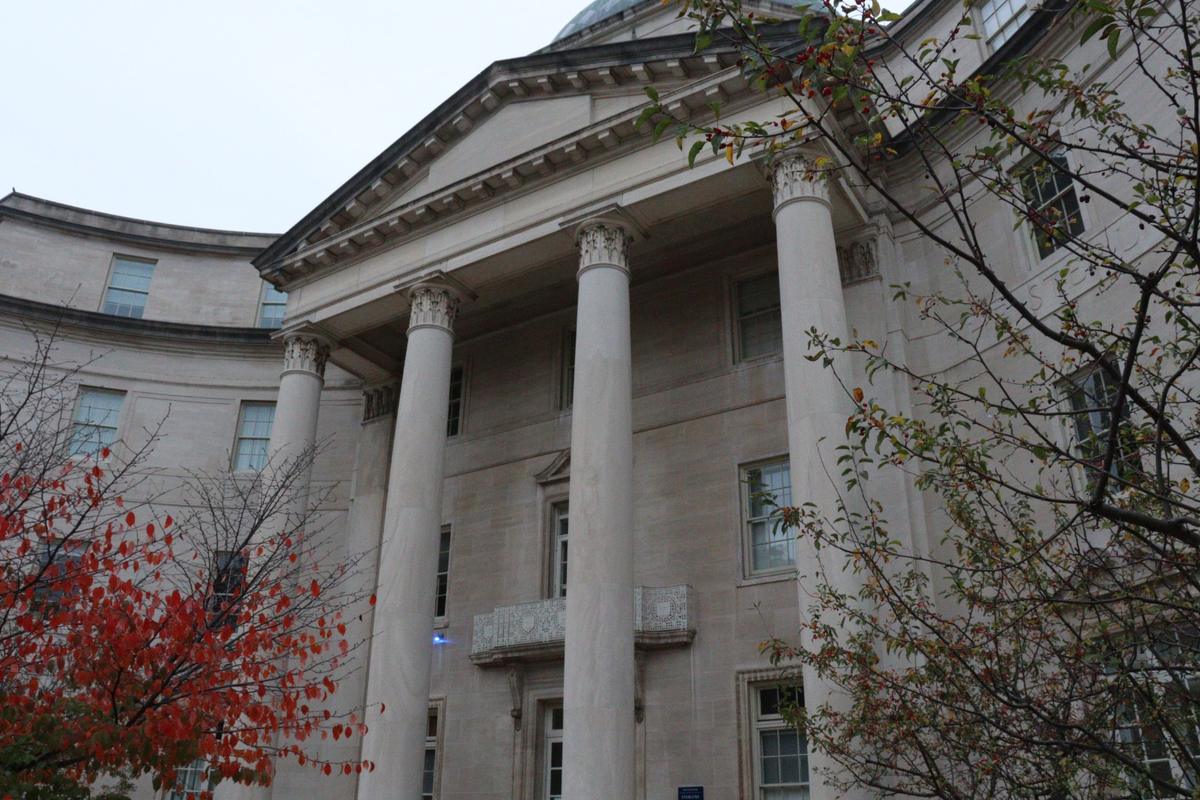Yale Bone Center celebrates 35th year of groundbreaking research and advancement
As the Yale Bone Centers completes 35 years of research and development, three researchers share their work and collaboration with the center.

Hedy Tung, Staff Photographer
The Yale Bone Center is celebrating its 35th year of medical research and treatment advancement since its founding in 1987.
The Yale Bone Center was established at a time when medical diagnoses and treatment for skeletal diseases such as osteoporosis, hyperparathyroidism, and Paget’s disease of bone were rapidly improving. Initially, the center offered consultative services on acquired skeletal diseases and genetic disorders of skeletal structure and mineral content. However, it has now grown to improve the accuracy of diagnoses and expand clinical research programs. The center has now incorporated entities such as the bone density and body composition service and the mineral metabolism laboratory, both of which provide cutting edge research and clinical expertise.
“The Yale Bone Center Mineral Metabolism Lab has made it easy to obtain measurements of blood vitamin D levels, and provided access to resources that allow us to measure bone mass of our mice,” Clemens Bergwitz, associate professor of endocrinology, wrote to the News. “For our clinical studies, it has been helpful to have access to the bone center’s advanced equipment and to have guidance for specialized analysis of patient data.”
Bergwitz is a world expert in hereditary hypophosphatemic rickets with hypercalciuria, known as HRHH, a rare bone disorder characterized by symptoms including muscle weakness, short stature, skeletal deformities and bone pain. Bergwitz’s research has utilized the Bone Center’s resources, and since his identification of the genetic defect underlying HHRH, he has developed a research focus on inborn errors of bone and mineral metabolism.
Bergwitz’s lab uses mouse models of hypophosphatemia to better understand the responses of the body to oral phosphate therapy. The lab’s rising research interest is to understand how human and other animal cells sense inorganic phosphate, a molecule important for metabolism, and to identify mammalian systems suitable to study it using genome-wide RNAi screens.
“With the support of the Yale Bone Center and the director, Dr. Karl Insogna, I have initiated a research study to determine the use of newer methods to determine bone density in individuals with spinal cord injury,” Anika Anam, assistant professor of endocrinology, wrote to the News. “Although the most common osteoporotic-related fractures in postmenopausal women and older men are those of the spine, hip and wrist, people with spinal cord injuries have an increased fracture risk at the distal femur and proximal tibia.”
Anam focuses on researching bone densities in populations at risk for osteoporosis. Through the resources provided by the Bone Center she has been able to develop many groundbreaking technologies for screening and management. She even recently co-authored an article with Insogna exploring the significance of healthy eating, exercise and other lifestyle choices on postmenopausal women with osteoporosis.
As current measurement technologies are inadequate, Anam emphasized that it is necessary to be able to accurately and reproducibly measure bone density in order to view the impact of treatment and predict future fracture risk since more than 80 percent of patients develop osteoporosis long-term. With the support of the Yale Bone Center, Anam was able to obtain a knee positioner from the Toronto Rehabilitation Institute, which has pioneered the use of distal femur and proximal tibia bone density measurement. Teaming up with the Bone Center’s bone densitometry technologists, Anam and her team have launched a study to determine the precision of a knee bone density protocol using this knee positioner in healthy individuals.
“There is a great possibility of disproportionate impacts on musculoskeletal health with patients who have had COVID-19, due to the intensive experience of hospitalization and illness,” Evelyn Hsieh, assistant professor of rheumatology and epidemiology and chief of rheumatology at VA Connecticut Healthcare, wrote to the News. “My team and I are working hard to understand the impact of isolation and lack of access to physical therapy, rehabilitation and social support on outcomes of musculoskeletal health such as fractures, bone metabolism, osteoporosis and sarcopenia.”
Hsieh has conducted extensive research on osteoporosis in patients who have underlying medical conditions that may predispose them to low bone mineral density, either from the disease itself or from the medications that they’re on.
The Bone Center has provided her with significant support and mentorship as she tackles her work examining the effect of COVID-19 hospitalization on musculoskeletal health in older patients. She is a lead co-investigator of VALIANT, a longitudinal study that assesses COVID-19 in older adults and follows up with patients at different time intervals to interview them regarding their well-being, physical function and any physical deficits. She is working to assess bone density, body composition measures and muscle strength for the patients in this study as well.
Karl Insogna, professor of endocrinology, is the current director of the Yale Bone Center.
Correction, April 26: This article previously misspelled Anam’s name. It has been updated.







